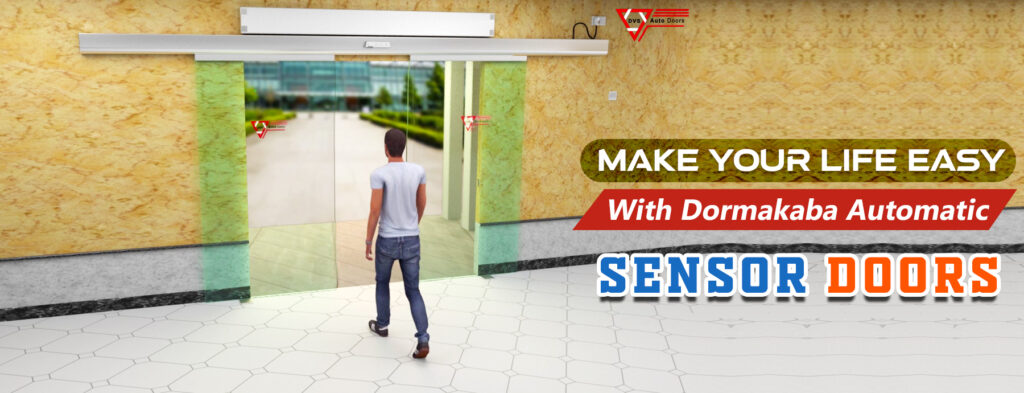In today’s fast-paced world, convenience and efficiency play a vital role in our daily lives. Automatic sliding doors have become an essential feature in commercial buildings, malls, airports, and even some residential spaces. Their seamless operation not only adds a touch of sophistication but also enhances accessibility and energy efficiency. If you’ve ever wondered how these doors work, this article will give you an in-depth understanding of their mechanism.
What Are Automatic Sliding Doors?
An automatic sliding door is a type of door that operates without manual effort. Unlike traditional doors, these use advanced technology to sense movement or presence and open or close automatically. They offer a smooth and hands-free experience, making them ideal for areas with high foot traffic.
Brands like Dorma Automatic Sliding Door have set a benchmark in the industry by providing reliable, efficient, and aesthetically appealing solutions.
Key Components of an Automatic Sliding Door
The functioning of an automatic sliding door depends on several core components working in harmony. Here’s a breakdown of its main parts:
1. Sensors
Sensors are the brain of the operation. They detect motion or presence to trigger the door’s opening and closing mechanism. Common types of sensors include:
- Infrared Sensors: Detect heat emitted by people or objects.
- Ultrasonic Sensors: Emit sound waves to detect movement.
- Microwave Sensors: Use radar technology to sense motion.
For instance, in a Dorma Automatic Sliding Door, the sensors are highly advanced, ensuring quick and accurate detection.
2. Control Unit
The control unit is the system’s command center. It processes data received from the sensors and signals the motor to perform the required action. This component also allows for programming specific settings like:
- Speed of opening and closing
- Delay timing
- Safety features
3. Motor and Drive Mechanism
The motor powers the door’s movement. It is typically a DC (Direct Current) motor connected to a drive mechanism, such as a belt or chain, which moves the door panels along a track. The motor is designed for quiet and efficient operation.
4. Track and Rollers
The track is the pathway along which the door panels slide. Rollers attached to the panels enable smooth and frictionless movement. High-quality systems like the Dorma Automatic Sliding Door use durable tracks and precision-engineered rollers to ensure longevity.
5. Door Panels
The panels are the visible part of the door system. They are usually made of materials like glass, aluminum, or wood, chosen based on the building’s design and functional requirements. Many systems also include safety glass for added protection.
6. Safety Systems
Safety is paramount in automatic sliding doors. They are equipped with features like:
- Obstacle Detection: Stops the door if an object or person is in the way.
- Emergency Release: Allows manual operation in case of power failure.
- Backup Power Supply: Keeps the door functional during power outages.
How Automatic Sliding Doors Work: The Step-by-Step Process
Understanding how these components work together reveals the brilliance of automatic sliding doors. Here’s a step-by-step look at the process:
- Detection of Presence
When a person approaches the door, the sensor detects their presence or motion. - Signal Transmission
The sensor sends a signal to the control unit, which processes the input. - Activation of the Motor
The control unit signals the motor to activate. The motor engages the drive mechanism to move the door panels along the track. - Door Opens
The door panels slide open smoothly, allowing the person to pass through. - Closing Mechanism
Once the person has passed, the sensor detects the absence of movement. The control unit signals the motor to close the door after a programmed delay. - Safety Checks
During the process, the system continuously checks for obstacles or issues, ensuring safe operation.
Why Choose Dorma Automatic Sliding Doors?
When it comes to automatic sliding doors, Dorma is a trusted name. Their products are known for their durability, advanced technology, and sleek designs. Some benefits of Dorma automatic sliding doors include:
- Energy Efficiency: Minimizes heat or cooling loss in buildings.
- Customizable Settings: Adjustable speeds, delays, and modes.
- Aesthetic Appeal: Modern designs that complement any architectural style.
- Reliable Safety Features: Compliant with global safety standards.
Applications of Automatic Sliding Doors
Automatic sliding doors are versatile and suitable for various settings:
- Commercial Buildings: Enhance accessibility and create a professional look.
- Hospitals: Maintain hygiene with touch-free operation.
- Retail Stores: Provide a welcoming entrance for customers.
- Airports: Manage high foot traffic efficiently.
- Residential Spaces: Add a luxurious and modern touch.
Advantages of Automatic Sliding Doors
Here are some reasons why automatic sliding doors are becoming increasingly popular:
1. Accessibility
Automatic doors make life easier for everyone, especially individuals with disabilities or mobility challenges.
2. Energy Efficiency
The doors open only when needed, reducing the loss of air conditioning or heating, which lowers energy bills.
3. Hygiene
In spaces like hospitals, the touch-free operation of automatic sliding doors minimizes the spread of germs.
4. Safety
With features like obstacle detection and emergency manual operation, these doors prioritize user safety.
5. Aesthetics
Automatic sliding doors create a sleek and modern look, enhancing the building’s overall appeal.
Maintenance Tips for Automatic Sliding Doors
To ensure the longevity and optimal performance of your automatic sliding door, regular maintenance is crucial:
- Clean the Tracks: Remove dirt and debris to prevent obstructions.
- Inspect the Rollers: Check for wear and tear and lubricate if necessary.
- Test the Sensors: Ensure they are functioning accurately.
- Professional Servicing: Schedule regular check-ups by professionals, especially for brands like Dorma.
Future Trends in Automatic Sliding Door Technology
The field of automatic doors is continuously evolving. Some trends to watch for include:
- Smart Integration: Doors connected to IoT (Internet of Things) devices for better control.
- Touchless Technology: Enhanced sensors that eliminate even minimal contact.
- Sustainability: Use of eco-friendly materials and energy-efficient systems.
Conclusion
Automatic sliding doors are more than just a convenience; they are a blend of technology, design, and functionality. Whether it’s a bustling airport or a serene residential space, these doors cater to a wide range of needs while adding a modern touch. Brands like Dorma Automatic Sliding Door exemplify the perfect combination of reliability and innovation.
Understanding how these doors work not only satisfies curiosity but also emphasizes their importance in today’s infrastructure. If you’re considering installing an automatic sliding door, invest in a quality product that ensures durability, safety, and efficiency.
Read More at https://theguestblogs.com/






